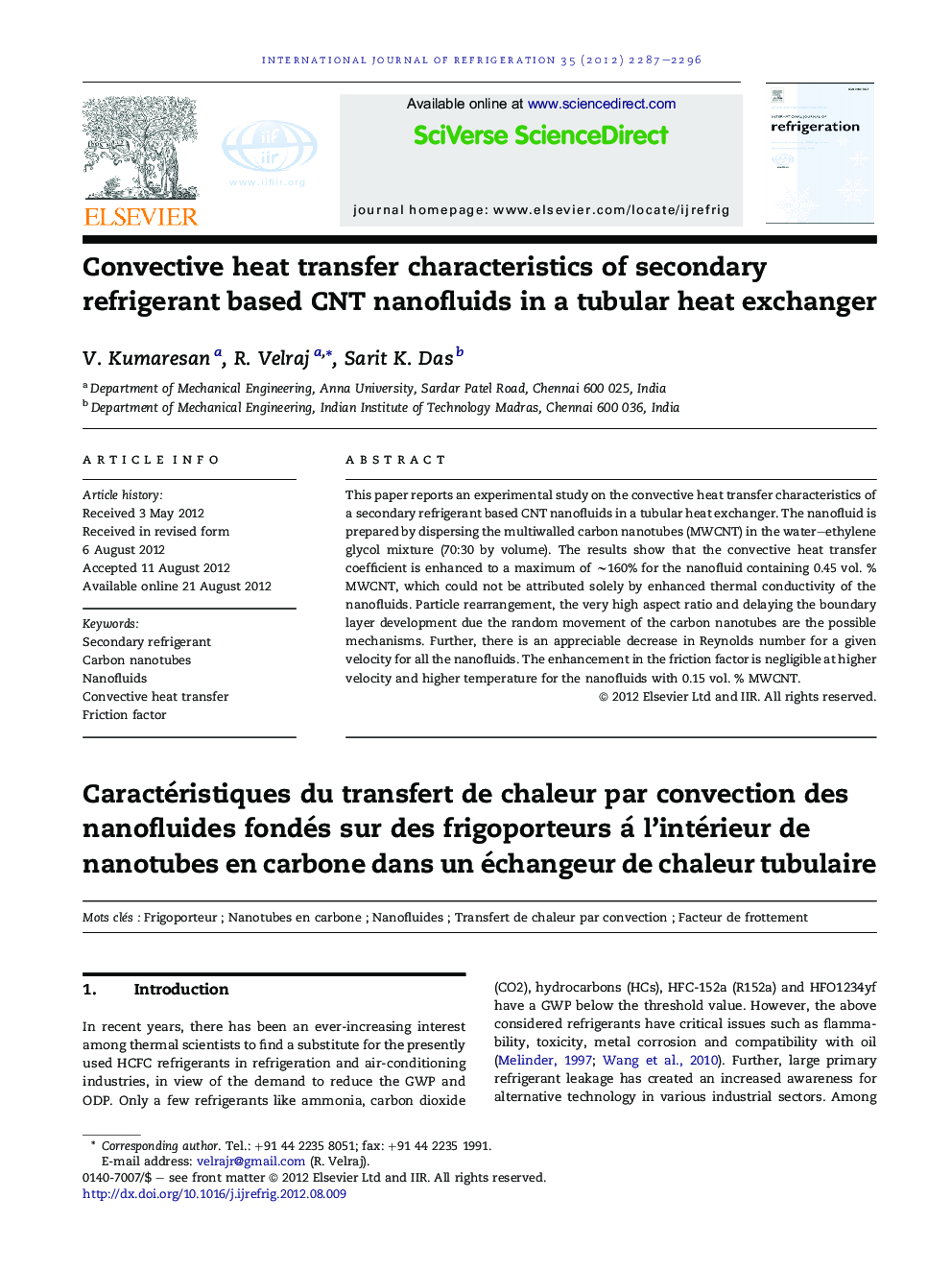| Article ID | Journal | Published Year | Pages | File Type |
|---|---|---|---|---|
| 790310 | International Journal of Refrigeration | 2012 | 10 Pages |
This paper reports an experimental study on the convective heat transfer characteristics of a secondary refrigerant based CNT nanofluids in a tubular heat exchanger. The nanofluid is prepared by dispersing the multiwalled carbon nanotubes (MWCNT) in the water–ethylene glycol mixture (70:30 by volume). The results show that the convective heat transfer coefficient is enhanced to a maximum of ∼160% for the nanofluid containing 0.45 vol. % MWCNT, which could not be attributed solely by enhanced thermal conductivity of the nanofluids. Particle rearrangement, the very high aspect ratio and delaying the boundary layer development due the random movement of the carbon nanotubes are the possible mechanisms. Further, there is an appreciable decrease in Reynolds number for a given velocity for all the nanofluids. The enhancement in the friction factor is negligible at higher velocity and higher temperature for the nanofluids with 0.15 vol. % MWCNT.
► Heat transfer coefficient is enhanced to maximum of ∼160% at 0.83 m s−1 ► An appreciable decrease in Re at a given velocity for all the nanofluids. ► Negligible increase in friction factor for nanofluid with 0.15 vol.% MWCNT at 40 °C. ► High velocity is desirable for low temperature to utilize positive thermal effects. ► 0.15 vol. % MWCNT is highly favorable to enhance the heat transfer.
